GrabCAD
![[NASA Challenge] Transonic Wind Tunnel Test Section Design](/previews/12413003.jpg)
[NASA Challenge] Transonic Wind Tunnel Test Section Design
by GrabCAD
Last crawled date: 1 year, 10 months ago
For additional information, explanations, and renders, please see the PDF document labeled “Detailed Explanation”. This is my submission to the NASA Challenge: New Transonic Wind Tunnel Test Section, and serves as a design concept to develop more efficient wind tunnel test sections.
The design consists primarily of two features to greatly enhance the efficiency of current wind tunnels. Most prominently, the conveyor belt system allows for the movement of test sections in and out of the wind tunnel. For a singular wind tunnel, the maximum amount of required test sections is solely two. Given that testing lasts for multiple hours at a time, an inactive test section can be reconfigured for the following test, without the need for more sections — namely, additional test sections would add unnecessary costs. Consequently, the conveyor/turntable design featured in this submission ensures the ability to reconfigure entire test sections while simultaneously allowing for the testing of another section in the wind tunnel.
Secondly, each test section is covered in 264 polycarbonate panels, mounted to the walls. Each panel can be electrically connected to the remainder of the system via a pogo pin connection (again, please see the PDF for greater detail). The panels mount to the frame of the test section, which has been designed with nuts welded to its interior. The test section frame is hollow (with struts for support) to allow for wiring to connect all the panels together. This concept allows for the complete reconfiguration of entire test sections, without needing to construct new frames for the test section exterior. Furthermore, by institutionalizing the mounting of sensors and models in a test section, wind tunnels worldwide can utilize the same mechanism, making it simple to test a model in any tunnel. In essence, this technology potentially could set the stage for institutionalized wind tunnel testing system in the years to come. As a matter of additional redundancy in the system (thus ensuring that panels don't come loose during testing), to remove a panel, one would have to push inwards, pull out, and then in again, making it effectively impossible to dislodge a panel during testing. Sadly, due to time constraints, this wasn't modeled.
If there are questions about the design, I’d be glad to answer them in the comments section! I’d like to give a huge thank you to GrabCAD and NASA for hosting this competition. I wish my fellow competitors the best of luck!
The design consists primarily of two features to greatly enhance the efficiency of current wind tunnels. Most prominently, the conveyor belt system allows for the movement of test sections in and out of the wind tunnel. For a singular wind tunnel, the maximum amount of required test sections is solely two. Given that testing lasts for multiple hours at a time, an inactive test section can be reconfigured for the following test, without the need for more sections — namely, additional test sections would add unnecessary costs. Consequently, the conveyor/turntable design featured in this submission ensures the ability to reconfigure entire test sections while simultaneously allowing for the testing of another section in the wind tunnel.
Secondly, each test section is covered in 264 polycarbonate panels, mounted to the walls. Each panel can be electrically connected to the remainder of the system via a pogo pin connection (again, please see the PDF for greater detail). The panels mount to the frame of the test section, which has been designed with nuts welded to its interior. The test section frame is hollow (with struts for support) to allow for wiring to connect all the panels together. This concept allows for the complete reconfiguration of entire test sections, without needing to construct new frames for the test section exterior. Furthermore, by institutionalizing the mounting of sensors and models in a test section, wind tunnels worldwide can utilize the same mechanism, making it simple to test a model in any tunnel. In essence, this technology potentially could set the stage for institutionalized wind tunnel testing system in the years to come. As a matter of additional redundancy in the system (thus ensuring that panels don't come loose during testing), to remove a panel, one would have to push inwards, pull out, and then in again, making it effectively impossible to dislodge a panel during testing. Sadly, due to time constraints, this wasn't modeled.
If there are questions about the design, I’d be glad to answer them in the comments section! I’d like to give a huge thank you to GrabCAD and NASA for hosting this competition. I wish my fellow competitors the best of luck!
Similar models
grabcad
free

NASA Transonic Wind Tunnel Test Section Design
...in, making it effectively impossible to dislodge a panel during testing. sadly, due to time constraints, this wasn't modeled.
grabcad
free

NASA Challenge: New Transonic Wind Tunnel Test Section
...nasa challenge: new transonic wind tunnel test section
grabcad
nasa challenge: new transonic wind tunnel test section
grabcad
free
![[Design Concept] New Transonic Wind Tunnel Test Section | NASA 2022](/t/12053983.jpg)
[Design Concept] New Transonic Wind Tunnel Test Section | NASA 2022
...test section
additional files to follow :
- complete design
- installing mechanism and animation
- wind tunnel simulation result
grabcad
free
![[Mechanical Design] New Transonic Wind Tunnel Test Section | NASA 2022](/t/12050280.jpg)
[Mechanical Design] New Transonic Wind Tunnel Test Section | NASA 2022
...tion
additional files on progress :
- complete design soon
- installing mechanism and animation
- wind tunnel simulation result
grabcad
free

Interchangeable wind tunnel test section
...interchangeable wind tunnel test section
grabcad
nasa challenge of transonic wind tunnel test section
grabcad
free

Just some renderings of the NASA Challenge: New Transonic Wind Tunnel Test Section
...d tunnel test section
grabcad
https://grabcad.com/challenges/nasa-challenge-new-transonic-wind-tunnel-test-section
rendus plans
grabcad
free

Prototype Nasa
...prototype nasa
grabcad
nasa challenge: new transonic wind tunnel test section
grabcad
free

NASA Challenge: New Transonic Wind Tunnel Test Section
... the test section.
low cost, every elements already exists.
safety deflectors system to rapidly swap out models and test section.
grabcad
free

NASA Wind Tunnel Facility
...this design is the choice and improves operational and human factors in the wind tunnel facility and supports wind tunnel tests .
grabcad
free

NASA Challenge: New Transonic Wind Tunnel Test Section
...nasa challenge: new transonic wind tunnel test section
grabcad
https://www.linkedin.com/in/andrepereirabarros
Transonic
3d_export
$7

Transonic Wind Tunnel
...transonic wind tunnel
3dexport
transonic wind tunnel
3d_export
$60

dassault etendard iv p recon version
...recon version 3dexport the dassault étendard iv is a transonic carrier-borne strike fighter aircraft developed and manufactured by french...
3d_export
$60
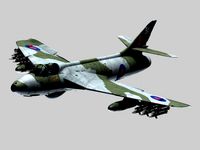
hawker hunter
...hawker hunter 3dexport the hawker hunter is a transonic british jet-powered fighter aircraft that was developed by hawker...
3d_export
$60
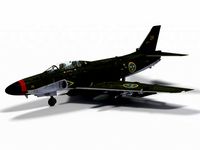
saab 32 lansen
...lansen 3dexport the saab 32 lansen is a two-seat, transonic military aircraft designed and manufactured by saab from 1955...
3d_export
$60
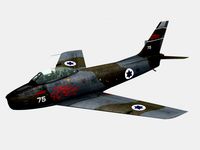
north american f-86 sabre
...sabre 3dexport the north american f-86 sabre is a transonic jet fighter aircraft. produced by north american aviation, the...
3d_export
$60

dassault etendard iv m
...iv m 3dexport the dassault étendard iv is a transonic carrier-borne strike fighter aircraft developed and manufactured by french...
thingiverse
free

Transonic Blade
...arhammer 40k universe. used by sicarian ruststalkers of adeptus mechanicus.
lifesize model ~93 cm(36.6 in)
3 patterns available.
thingiverse
free

Sensor Holder for Transonic (dialysis) by pravdaz
...)
on the model in photo, the gap between the holes was not exact (corrected since). i screwed in a bit hard and a break occurred.
thingiverse
free

Warhammer40K Transonic Razor by ZaalriMakes
...he complete model so if you print it as one scaled down print they will be sliced and use a bit more filament than a solid model.
thingiverse
free

Startnummer Halterung Clamp for Start number Aero Seatstem by NoLuckN0Sk1ll
...your bike. i took the values by my fuji transonic from 2017. i printed a bit smaller with a...
Tunnel
turbosquid
$2

Tunnel
...
turbosquid
royalty free 3d model tunnel for download as fbx on turbosquid: 3d models for games, architecture, videos. (1519777)
turbosquid
$30

Tunnel
...royalty free 3d model tunnel for download as ma, obj, and fbx on turbosquid: 3d models for games, architecture, videos. (1376614)
turbosquid
free

Tunnel
...free 3d model tunnel for download as c4d, blend, fbx, and dae on turbosquid: 3d models for games, architecture, videos. (1678612)
turbosquid
$22

Tunnel
...y free 3d model tunnel for download as c4d, fbx, 3ds, and obj on turbosquid: 3d models for games, architecture, videos. (1558251)
turbosquid
$20

TUNNEL
... available on turbo squid, the world's leading provider of digital 3d models for visualization, films, television, and games.
turbosquid
$11

Tunnels
... available on turbo squid, the world's leading provider of digital 3d models for visualization, films, television, and games.
turbosquid
$10

tunnel
... available on turbo squid, the world's leading provider of digital 3d models for visualization, films, television, and games.
3d_export
$65

tunnel
...tunnel
3dexport
simple rendering of the scene file
3d_export
$65

tunnel
...tunnel
3dexport
simple rendering of the scene file
3d_export
$65

tunnel
...tunnel
3dexport
simple rendering of the scene file
Nasa
turbosquid
$49

Nasa Marscopter
...id
royalty free 3d model nasa marscopter for download as max on turbosquid: 3d models for games, architecture, videos. (1323349)
turbosquid
$500
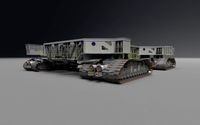
NASA Crawler
... available on turbo squid, the world's leading provider of digital 3d models for visualization, films, television, and games.
turbosquid
$5

Nasa Rocket
... available on turbo squid, the world's leading provider of digital 3d models for visualization, films, television, and games.
turbosquid
$1

NASA Spool.max
... available on turbo squid, the world's leading provider of digital 3d models for visualization, films, television, and games.
3d_export
$15

US NASA 3D Model
...us nasa 3d model
3dexport
spaceship ship nasa battle blender
us nasa 3d model antonielfelain 96625 3dexport
turbosquid
$99
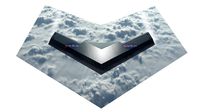
NASA MIT Wing
...oyalty free 3d model nasa mit wing for download as ma and max on turbosquid: 3d models for games, architecture, videos. (1510099)
turbosquid
$29
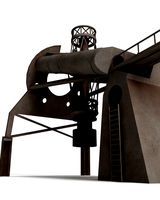
NASA Electronic Telescope
... available on turbo squid, the world's leading provider of digital 3d models for visualization, films, television, and games.
turbosquid
$6

Real flag NASA
... available on turbo squid, the world's leading provider of digital 3d models for visualization, films, television, and games.
3d_export
$41
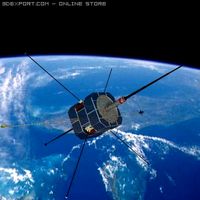
NASA FAST Satellite 3D Model
...odel
3dexport
nasa space satellite earth aurora sensor panel solar orbit
nasa fast satellite 3d model visualmotion 20244 3dexport
3d_export
$20

22k photorealistic earth - nasa
...tures directly from nasa.<br>nasa solar system bundle coming soon!<br>contact info@teichmanmedia.eu for all iquiries.
Wind
design_connected
$4
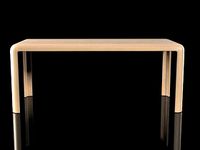
Wind
...wind
designconnected
emmemobili wind dining tables computer generated 3d model. designed by chiara vaghi.
3d_ocean
$4
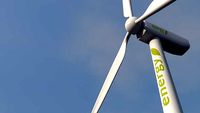
Wind Turbine
...n
and render setup turbine wind
wind turbine, modeled with cinema4d r13 , render setup and textured, custom logo for wind turbine
3d_export
$40
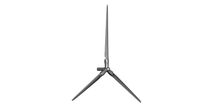
wind turbine
...wind turbine
3dexport
wind turbine
3d_export
$40
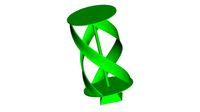
wind turbine
...wind turbine
3dexport
wind turbine
3d_export
$40

wind turbine
...wind turbine
3dexport
wind turbine
3d_export
$40
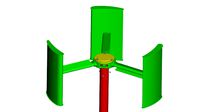
wind turbine
...wind turbine
3dexport
wind turbine
3d_export
$40
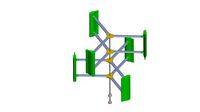
wind turbine
...wind turbine
3dexport
wind turbine
3d_export
$40

wind turbine
...wind turbine
3dexport
wind turbine
3d_export
$40

wind turbine
...wind turbine
3dexport
wind turbine
3d_export
$40

wind turbine
...wind turbine
3dexport
wind turbine
Challenge
turbosquid
$120
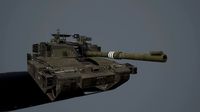
Challenger 2 and challenger 2 TES
...e 3d model challenger 2 and challenger 2 tes for download as on turbosquid: 3d models for games, architecture, videos. (1430319)
3d_export
$59

dodge challenger srt8
...dodge challenger srt8
3dexport
dodge challenger srt8
3d_export
$20
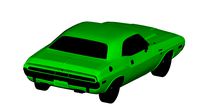
dodge challenger 1970
...dodge challenger 1970
3dexport
dodge challenger 1970
3d_export
$15
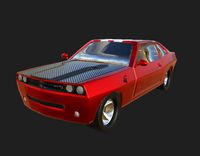
Dodge Challenger Hellcat
...dodge challenger hellcat
3dexport
dodge challenger hellcat
turbosquid
$80

challenger-2
...rbosquid
royalty free 3d model challenger-2 for download as on turbosquid: 3d models for games, architecture, videos. (1498848)
3d_export
$5
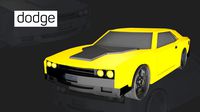
dodge challenger car
...dodge challenger car
3dexport
3d model dodge challenger!
turbosquid
$99
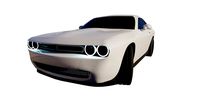
Dodge Challenger
...
royalty free 3d model dodge challenger for download as blend on turbosquid: 3d models for games, architecture, videos. (1489358)
turbosquid
$49
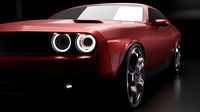
Dodge Challenger
...
royalty free 3d model dodge challenger for download as blend on turbosquid: 3d models for games, architecture, videos. (1698375)
turbosquid
$10
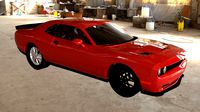
dodge challenger
...
royalty free 3d model dodge challenger for download as blend on turbosquid: 3d models for games, architecture, videos. (1405948)
3d_export
free

dodge challenger srt8
...dodge challenger srt8
3dexport
dodge challenger srt8 free model
Section
archibase_planet
free

Section
...section
archibase planet
storefront shelving rack
section 8 - 3d model (*.gsm+*.3ds) for interior 3d visualization.
archibase_planet
free

Section
...section
archibase planet
post storefront stay
section 10 - 3d model (*.gsm+*.3ds) for interior 3d visualization.
archibase_planet
free

Section
...section
archibase planet
sta post desk
section 6 - 3d model (*.gsm+*.3ds) for interior 3d visualization.
archibase_planet
free
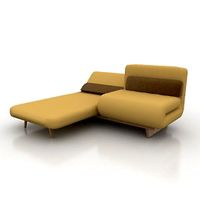
Section
...section
archibase planet
settee seat furniture
double section f1278 - 3d model (*.gsm+*.3ds) for interior 3d visualization.
archibase_planet
free

Section
...section
archibase planet
settee seat furniture
double section f1277 - 3d model (*.gsm+*.3ds) for interior 3d visualization.
archibase_planet
free

Section
...section
archibase planet
storefront glass case show-case
section 4 - 3d model (*.gsm+*.3ds) for interior 3d visualization.
archibase_planet
free

Section
...section
archibase planet
showcase show-case glass case
section 3 - 3d model (*.gsm+*.3ds) for interior 3d visualization.
3d_export
$5

sectional column
...sectional column
3dexport
sectional reinforced column 400x400 mm
turbosquid
free

Tree Section
...ction
turbosquid
free 3d model tree section for download as on turbosquid: 3d models for games, architecture, videos. (1263969)
turbosquid
$9

Sectional sofa
...uid
royalty free 3d model sectional sofa for download as max on turbosquid: 3d models for games, architecture, videos. (1638909)
Test
turbosquid
$99

test
...st
turbosquid
royalty free 3d model test for download as max on turbosquid: 3d models for games, architecture, videos. (1251637)
turbosquid
$63
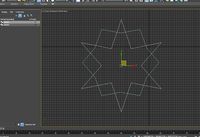
TEST
...st
turbosquid
royalty free 3d model test for download as max on turbosquid: 3d models for games, architecture, videos. (1446233)
turbosquid
$1
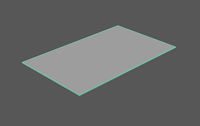
test
...st
turbosquid
royalty free 3d model test for download as fbx on turbosquid: 3d models for games, architecture, videos. (1360941)
3d_export
free

johnny test
...johnny test
3dexport
johnny test 3d
turbosquid
$15
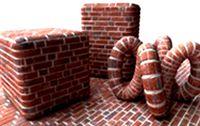
Test
... available on turbo squid, the world's leading provider of digital 3d models for visualization, films, television, and games.
turbosquid
$2

test
... available on turbo squid, the world's leading provider of digital 3d models for visualization, films, television, and games.
turbosquid
free

Test
... available on turbo squid, the world's leading provider of digital 3d models for visualization, films, television, and games.
turbosquid
free

test
... available on turbo squid, the world's leading provider of digital 3d models for visualization, films, television, and games.
turbosquid
free

Test
... available on turbo squid, the world's leading provider of digital 3d models for visualization, films, television, and games.
3d_export
$5
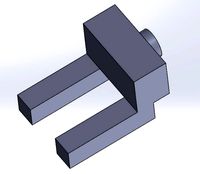
gripper test
...gripper test
3dexport
robot gripper test model
Design
3ddd
$1
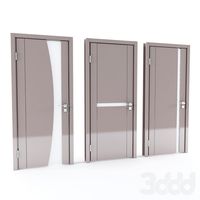
LINE DESIGN (Doors Design)
...line design (doors design)
3ddd
дверь
modern doors design - line design concept
turbosquid
$5

designer
...alty free 3d model designer for download as max, obj, and fbx on turbosquid: 3d models for games, architecture, videos. (1422665)
3ddd
$1

VER DESIGN
...ver design
3ddd
ver design
кресло ver design
3ddd
$1
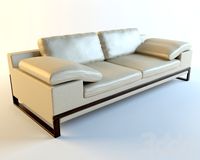
VER DESIGN
...ver design
3ddd
ver design
диван ver design
3ddd
$1

Bagno design
...bagno design
3ddd
bagno design , унитаз
санитария bagno design
3ddd
free

VER DESIGN
...ver design
3ddd
ver design , стеллаж
полка ver design
3ddd
$1
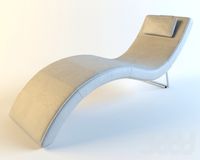
VER DESIGN
...ver design , лежак , шезлонг
шезлонг ver design
3d_export
free

designer
..., trees and much more. the model has 3 types of parts: - 4 cells - 6 cells - 8 cells the *.max file contains 5 colored materials.
3d_export
$19
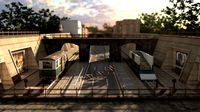
level design
...level design
3dexport
you can use this design (level design) in your own game.
3d_export
$7
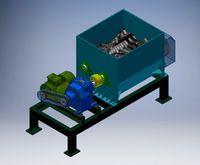
Crusher design
...crusher design
3dexport
crusher design
